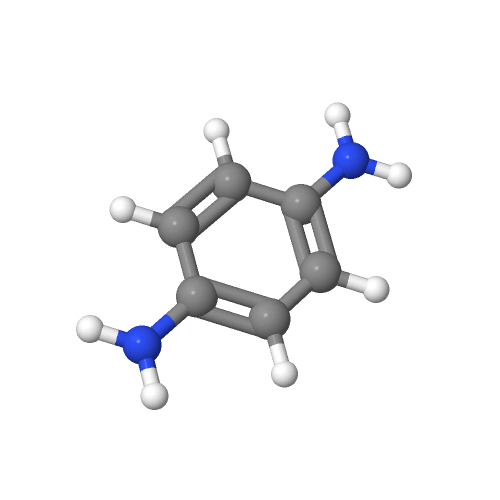Chemical of the Month: P-phenylediamine (PPD)

What is P-phenylediamine?
P-phenylediamine or probably more known as PPD is a dye used in different products such as hair colour, henna tattoos, printing, oil, gas, and rubber products but it can also be found in textiles such as black clothes and nylon stocking, black rubber etc. It is best known for its functions as a hair dye, and has been used for more than 100 years. More recently it is used in henna tattoosin order to make the tattoo last longer and give it a darker and black colour instead of the natural red henna. It is a clear liquid which needs to be oxidized to develop its colour. In the EU PPD is not allowed in products with skin contact, but it is legal to use it in concentration for maximum 2% in hair dyes.
So what is the problem?
PPD is a very allergenic chemical, and when it is used in products with direct skin contact it can cause allergic reactions such as eczema and irritation. In more severe cases it can cause facial oedema and anaphylaxis, in those cases people need to be hospitalized. There has been a big increase in the frequency of positive allergenic reactions towards PPD over time, this is thought to be due to more people dyeing their hair at an earlier age. Tests have shown that if the concentration were high enough everyone would develop an allergy to PPD (the test showed 100 % reactions). Some of the more severe reactions happen when PPD is added to a henna tattoo, when the henna tattoo is applied on skin; people become sensitized and develop the allergy. For that reason: never ever test a hair dye directly on your skin. When a person has developed an allergy to PPD she or he will experience reoccurring allergic reactions for the rest of their life every time they get in contact with PPD or other chemicals related to PPD (cross –reaction). In some cases children and grown-ups, who have had a henna tattoo, now experience allergic reactions each time they use nylon stockings, use an IPad with a cover made of black rubber, steering wheel in the car and other products that contain PPD. Because of the risk of allergic reactions, PPD is not allowed in henna tattoo in the EU – but black henna tattoos are still made in countries outside Europe and are still used illegally in Europe at festivals, markets etc.
What the experts say about PPD
A big English study conducted in Bangkok with more than 1000 healthy people. The studies showed that between 1,3-7,2 % healthy consumers without any allergies would develop allergy to hair colour if it was used regularly during only 6 months. Now to develop skin allergy in just 6 months tells us how big the allergenic potential is of PPD.
AllergyCertified
PPD is not allowed in AllergyCertified products because of its allergenic potential and AllergyCertified recommend never to get a black henna tattoo or colour your hair with hair colour that contain PPD. If you already have had a black henna tattoo it is important that you inform your dentist or doctor in case you need local anaesthetics since a cross-reaction can occur between PPD and local anaesthetics. And one last thing: remember to always wash your new black clothes before putting them on. It is fairly easy to prevent skin allergy but impossible to get rid of it if you already have it.
